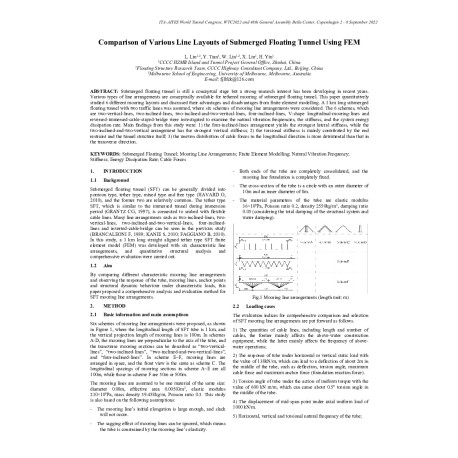Cart
0
0
No document
0,00 €
Total
Document successfully added to your shopping cart
Quantity
Total
There are 0 items in your cart.
There is 1 item in your cart.
Total documents
Total shipping
To be determined
Total
Search & filter
Search for a publication
Search & filter
New


Comparison of Various Line Layouts of Submerged Floating Tunnel UsingFEM
Comparison_of_Various_Line_Layou
L. Liu / Y. Tian / W. Lin / X.liu / H. Yin
Submerged floating tunnel is still a conceptual stage but a strong research interest has been developing in recent years. Various types of line arrangements are conceptually available for tethered mooring of submerged floating tunnel. This paper quantitatively studied 6 different mooring layouts and discussed their advantages and disadvantages from finite element modelling. A 1 km long submerged floating tunnel with two traffic lanes was assumed, where six schemes of mooring line arrangements were considered. The 6 schemes, which are two-vertical-lines, two-inclined-lines, two-inclined-and-two-vertical-lines, four-inclined-lines, V-shape longitudinal-mooring-lines and reversed-immersed-cable-stayed-bridge were investigated to examine the natural vibration frequencies, the stiffness, and the system energy dissipation rate. Main findings from this study were: 1) the four-inclined-lines arrangement yields the strongest lateral stiffness, while the two-inclined-and-two-vertical arrangement has the strongest vertical stiffness; 2) the torsional stiffness is mainly contributed by the end restraint and the tunnel structure itself; 3) the uneven distribution of cable forces in the longitudinal direction is more detrimental than that in the transverse direction.


